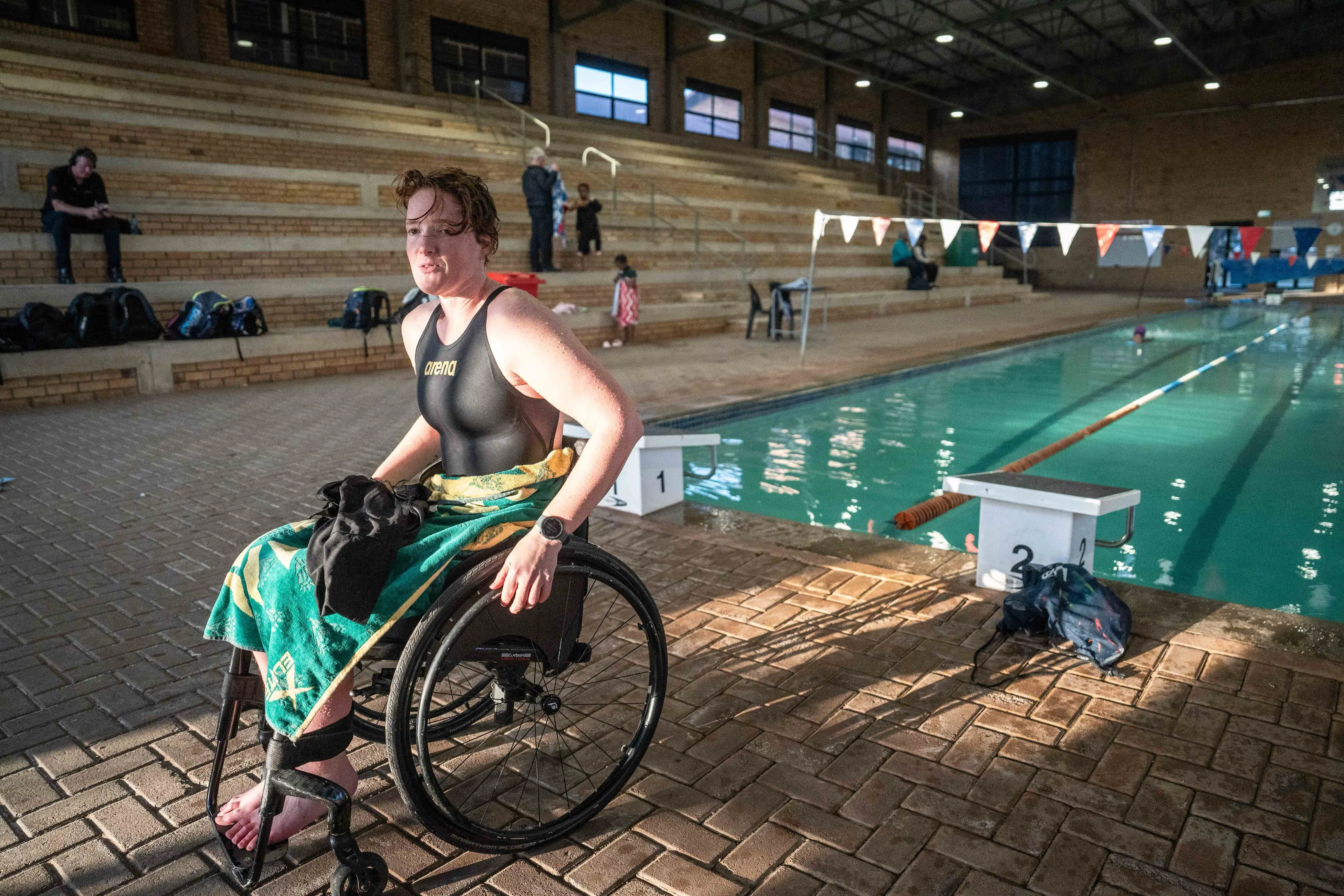PARALYMPICS 2024: What are classifications, and how do they work?
Palesa Manaleng
29 August 2024 | 11:57Classification determines who is eligible to compete in a para-sport, and it groups the eligible athletes in sports classes according to their activity limitation in a certain sport.
JOHANNESBURG - Team SA has selected 32 athletes to represent the country across nine sporting codes at the 2024 Paralympic Games in Paris.
The Games began on Wednesday, and will run through Sunday, 8 September.
And all eyes will be on the selected paralympians after their impressive performance at the Tokyo Paralympics in 2021, where South Africa ended with seven medals - four gold, one silver and two bronze.
Three African and three World records were also set in athletics.
The squad that went to the Rio Paralympic Games brought home 17 medals - seven gold, six silver and four bronze medals.
ALSO READ:
- PARALYMPICS 2024: ‘I want to make my country proud' - SA to be represented in Boccia for the first time
- PARALYMPICS 2024: Swimmer Kat Swanepoel on having her world flipped upside down, and flying Team SA's flag high
- PARALYMPICS 2024: 'Don't tell me I can't' - Archer Shaun Anderson ready for another successful shot
WHAT ARE CLASSIFICATIONS?
Athletes are grouped into classifications based on their physical abilities. This is used to decide which athletes are eligible to compete in each of the sports.
The aim is to create a level playing field by grouping athletes into classes based on their ability to perform certain activities.
Classification provides a structure for Paralympic competition. Athletes competing in Para sports have an impairment that leads to a competitive disadvantage.
A system has been put in place to minimise the impact of impairments on sports performance, and ensure an athlete's success is determined by skill, fitness, power, endurance, tactical ability, and mental focus. This system is called classification.
Every para-athlete has gone through an evaluation conducted by officials known as “classifiers,” who are appointed by the international governing body of that particular sport.
Classification determines who is eligible to compete in a para-sport. It groups eligible athletes in sports classes according to their activity limitation in a certain sport.
At the Paris Paralympics, you will see athletes with physical, vision and/or intellectual impairments that have at least one of the following 10 eligible impairments:
- Impaired muscle power;
- Impaired passive range of movement;
- Limb deficiency;
- Leg length difference, short stature, muscle tension, uncoordinated movement, involuntary movements;
- Vision impaiment; and
- Intellectual impairment.
Each sport has different physical demands, and so sports classes are different for each sport. This means that a sport class does not necessarily comprise athletes with the same impairment.
If different impairments cause similar activity limitations, athletes with these impairments are allowed to compete together.
Some sports only have one sport class, for example powerlifting.
Meanwhile, athletics has 52 sport classes that comprises different disciplines - running, jumping, and throwing events, and the sport includes athletes of all 10 eligible impairments.

Para-cyclist Pieter du Preez. Picture: Jacques Nelles/Eyewitness News
TEAM SA'S CLASSES EXPLAINED:
ATHLETICS
This varies from sport to sport. In athletics, a system of letters and numbers is used to distinguish each class.
Each class consists of a prefix “T” or “F” and a number. The prefix T stands for “Track”, and F stands for “Field.”
Each class has two digits. The first indicates the nature of an athlete's impairment, and the second the amount of functional ability. The lower the second number, the greater the impact of impairment on the athlete.
PARA-SWIMMING
In swimming, the prefixes S (freestyle, backstroke and butterfly), SB (breaststroke), and SM (individual medley) are used followed by digits that signify the type and extent of swimmers’ impairment.
For example, 1-10 is for athletes with physical impairments, with class 1 swimmers' impairment being the greatest, while 10 is the least.
Meanwhile, to compete in classes 11-13, athletes must have a visual impairment, with class 11 swimmers having little to no sight, and class 13 swimmers having limited sight. Class 14 is for athletes with an intellectual impairment.
ARCHERY
Archery is open to athletes with an eligible physical impairment. W1 is for athletes with an impairment in all four limbs that use a wheelchair, and Open combines W2 and ST classes, including athletes who have an impairment in the legs and use a wheelchair, or have a balance impairment and shoot standing or resting on a stool.
The use of assistive equipment or an assistant is allowed, depending on the impairment, and a variety of techniques may be employed, including pulling the bowstring with the mouth.
PARA-CYCLING
Cyclists compete in C (cycling), H (hand-cycling), T (tricycle), and B (tandem) classes, depending on their impairment.
C class is for athletes with a limb deficiency, impaired muscle power or range of motion and impairments affecting coordination, and is subdivided into classes C1, C2, C3, C4, and C5, according to the severity of impairment.
H class is for athletes competing with a handcycle with impairments such as amputation or paralysis of the legs or motor function impairments, and is subdivided into classes H1, H2, H3, H4 and H5.
T class is for athletes competing on a tricycle with a lack of balance and/or restriction in pedalling due to muscle tension, uncoordinated movements, or involuntary movement. It is subdivided into classes T1 and T2.
B class is for athletes with vision impairments competing on a tandem with a sighted pilot. B1, B2 and B3 athletes compete in one event.
EQUESTRIAN
In Para equestrian dressage riding, there are five grades for athletes with different physical and vision impairments. Athletes in Grade I have severe impairments affecting all limbs and the trunk.
Athletes in Grade II have either a severe impairment of the trunk and minimal impairment of the arms, or moderate impairment of the trunk, arms and legs. Athletes in Grade III have severe impairments in both legs with minimal or no impairment of the trunk, or moderate impairment of the arms and legs and trunk.
Athletes in Grade IV have a severe impairment or deficiency of both arms, or moderate impairment of all four limbs or short stature. Grade IV also includes athletes with a severe vision impairment or blindness (B1 sport class).
Athletes in Grade V have a mildly impaired range of movement or muscle strength, a deficiency of one limb, or a mild deficiency of two limbs. Grade V also includes athletes with vision impairment (B2 sport class).
WHEELCHAIR TENNIS
There are two sport classes in wheelchair tennis, and all that players have in common is an impairment that affects at least one leg.
The first sport class is the Open Division. Players are eligible to compete in the Open Division if they have a permanent physical impairment that results in substantial loss of function in one or both legs, and that meets or exceeds the sport’s minimum eligibility criteria.
The second sport class is the Quad Division. Players who meet the eligibility criteria above but who also have a permanent physical impairment that results in substantial loss of function in one or both arms, and where at least three limbs are affected, are eligible to compete in the Quad Division.
They have limited ability to handle the racket or move in the wheelchair, so you will find that players may require racket taping and/or an assistive device to play.
BOCCIA
Competitors with movement moderately affected in the trunk and to a high degree in the limbs. Athletes use a ramp to deliver the ball onto the court via a mouth pointer, head pointer, or finger release.
PARA-TRIATHLON
Triathletes have coordination affected at a low-level on one side, at a high degree in one arm, or the absence of limbs.
In the swim, all have a reduction of power. In the cycle, PTS4’s tend to either have good power but reduced control, or vice-versa.
In the run, all compensate for imbalance and asymmetry.

Para-swimmer Kat Swanepoel. Picture: Jacques Nelles/Eyewitness News
Get the whole picture 💡
Take a look at the topic timeline for all related articles.















